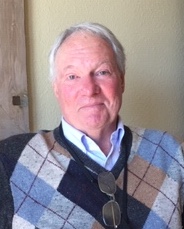
Richard Teague is Professor in the Department of Ecosystem Science and Management at Texas A&M University. He shares with us his deep understanding of the science of holistic management, soil science, and the psychology of changing over to new practices and paradigms.
1’37 how Teague got into grazing management
2’16 sustainability vs. regeneration
3’04 how do soils get degraded, how soil works
4’10 how photosynthesis feeds not only leaves, but also roots and soil microbial life
5’45 are soils depleted of minerals, or are they depleted of microbes that convey minerals into plants?
7’23 the reason to rotate livestock
9’24 what does regenerative grazing look like, how does it work
10’20 preventing overgrazing
12’01 science of grazing
12’22 the difference between doing science on small plots over a short time vs. larger scale land areas and many years
14’19 factoring economics into it
15’00 if CAFOs are so unsustainable, why are they profitable
15’37 at what tipping point do unsustainable livestock operations collapse
16’10 externalities–problems that unsustainable operations create and foist onto others
17’59 identifying regenerative management and comparing it to the industrial model
19’04 what successful regenerative grazers have in common
20’36 how do you do science with a long term timetable, decades rather than years
22’03 consequences of not doing regenerative practices
22’48 how much topsoil are we using
23’33 how long does it take to regenerate new topsoil, i.e. reverse erosion
25’30 soil carbon
27’55 the details of successful rotation
31’30 why has this not been more widely adopted if it’s a better method
32’06 universities are also unwilling to change
32’59 are large scale retailers making changes toward a more regenerative model?
33’55 the importance of markets and consumer pressure
34’32 McDonalds
36’21 where is holistic grazing most common
36’34 droughts and disasters tend to lead to change
36’56 Book: Call of the Reed Warbler
37’20 holistic management and wildlife — highly compatible
40’10 relationship with environmental community, some of which is anti-meat
41’51 goals and hopes … spreading information about this work and trying to understand it better
42’53 how can people learn to do this work
Cow photo by Celia Sun



Subscribe:
Apple Podcasts
Spotify